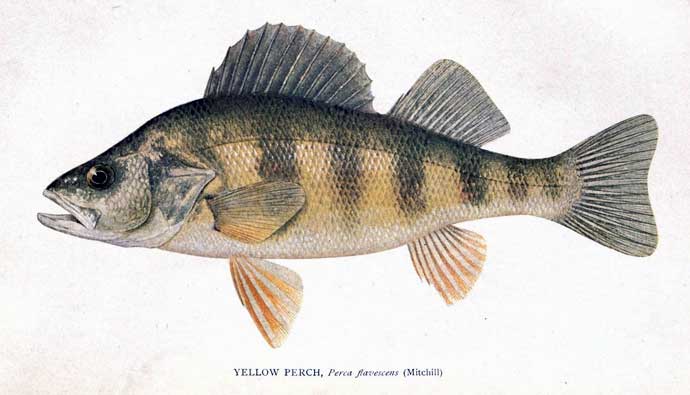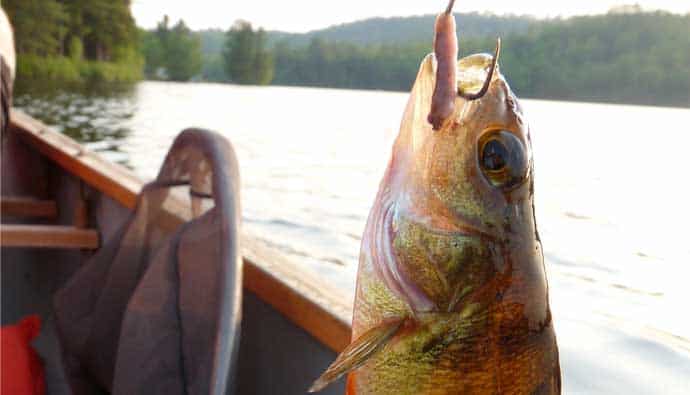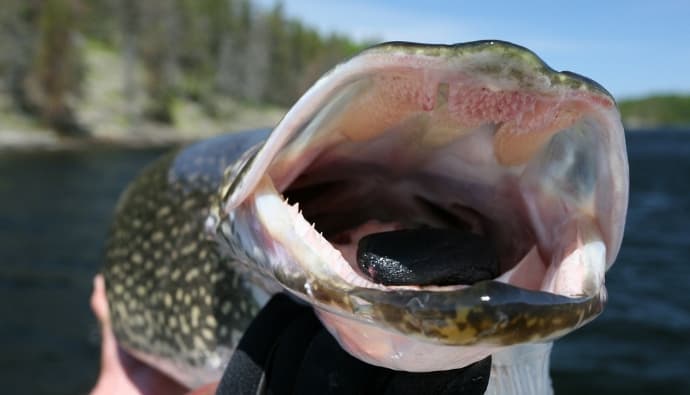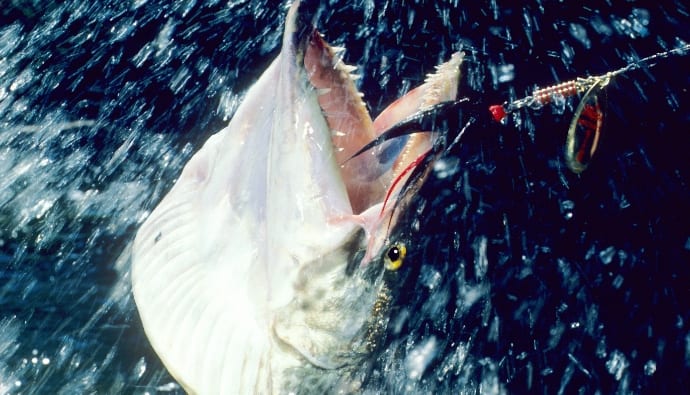If you’re looking to catch more perch, then you’ll love these yellow perch fishing tips!
Perch is a general name that spans a wide variety of fish. In this article, we’re going to focus on yellow perch.

Wherever you catch it, the fish provides hours of fun for fishermen of all types, whether you are fishing out on the water or from the docks.
Overview
Known as the quintessential panfish, the yellow perch, in particular, is a sought-after species due to its excellent taste. As the most distributed of perch, it is also called the ringed perch, coon perch, striped perch, and jack perch.

Yet, it lacks sporting qualities compared to its larger cousins, the sauger and the walleye.
Look for the yellow perch in the southern parts of west-central and eastern Canada and south of Kansas, Missouri, Indiana, and Ohio. The body of the perch is elongated and compressed and the two dorsal fins are separated while the tail is forked.
Yellow Perch Facts
| Scientific Name (s) | Perca flavescens |
| Common Name(s) | Yellow Perch |
| Family | Percidae |
| Identifying Characteristics | The body of the perch is elongated and slightly compressed. The two dorsal fins are separated, while the tail is slightly forked. |
| Depth Range | 15m or on the bottom |
| Habitat | Look for the yellow perch in the southern parts of west-central and eastern Canada, South of Kansas, Missouri, Indiana, and Ohio. |
| Limits | Check your local regulations |
| Largest Recorded | 4 pounds. 18 inches. |
| Status | No |
Yellow Perch Habitat
The perch feels right at home in small and large lakes, but small numbers can also be found in rivers. It prefers to remain in areas that have a steady supply of cool, clean water with ample amounts of sandy and rocky bottoms.
It’s a carnivorous fish that feeds on smaller fish, insect larvae, and shellfish that lie at the bottom of lakes and streams. The species is plentiful in the Great Lakes, especially in Lake Erie.
How to Fish for Yellow Perch

Freshwater perch fishing can be a lot of fun if you have the right gear. Since feel bites are hard to detect, you won’t feel any bites if you don’t use a sensitive rod, light line, and tiny terminal tackle.
Don’t use anything heavier than a light power rod. Use a 4 to 6-pound quality monofilament so that you can have the shock strength, abrasion resistance, and sensitivity you are looking for.
Since perch has smaller but tougher mouths compared to crappie, use a #6 or #8 hook with live bait. One of the best perch baits you can use is soft shells such as crayfish since it is available all year round. If those aren’t available, you can also use minnows and nightcrawlers.
Perch Fishing Tactics
- When putting together your perch rig, keep your bait at the tip of the hook to improve your chances of setting the hook in the small mouth of a perch.
- Perch schools don’t stay in one place for long. Once you find one, fish as fast as possible using a crappie rig, and don’t waste time removing the hook or re-baiting.
Yellow Perch Fishing Tips
- Perch bite best during daylight hours, especially around noon and towards evening. Drop your yellow perch rigs with the bait a foot or two about the bottom to attract schools.
- Perch tend to school near cover or at the bottom, so use a slip float to present live bait. You can adjust the depth and offer live bait at the perfect spot for fantastic results.
Spearfishing Perch
- Look for a large school of perch before jumping into the water with your spear using a Sounder. That way, you can hone in on the fish immediately for a surprise catch.
- Most large perch are in deeper water in rubble patches rather than around bigger submerged structures. In other words, if you want to spear a big one, you need to look in areas where anglers are scarce.
Yellow Perch Seasons
Perch is active after dark, especially during the spawning season in the spring when the temperature of the water rises to about 44 degrees.
Now spring perch fishing will be at its peak as the fish mates in shallow waters and tributaries where they will remain active 24/7. Fall is also an ideal season for perch fishing, while summer is far less so.
In mid-summer, the temperature rises in shallow lakes which makes the fish lethargic to the point that it stops feeding. Thus making it difficult to catch.
How to Clean Yellow Perch
- Hold the perch by the head and scale it by running a scalar or a large spoon in a downward motion down its length on both sides.
- Insert the tip of a sharp knife into the stomach near the anus and run the blade right up to the head. Open the fish and remove the guts from the exposed cavity.
- Make a V-shaped cut to remove the anus and discard the remains.
- Lay the fish on the cutting board, and holding your knife at an angle, slide it behind the gills till you reach the backbone.
- Run the knife under the skin all the way to the tail.
- Fold the fish in half so the head is over the tail and the skin is inside the fold.
- Put one hand on the tail and start removing the meat with the other hand using the knife to remove the skin. Remove and discard ribs.
How to Cook Yellow Perch
Perch Recipe
- Mix 1 teaspoon of salt, some black pepper, and half a teaspoon of cayenne pepper in a bowl, and coat the perch fillets in it.
- Shake off excess flour.
- Heat 2 tablespoons of butter in a skillet over medium heat until it starts to foam and turn brown.
- Place fillets in the skillet and cook till golden brown, about 2 minutes per side.
- Squeeze lemon juice on top and serve.
Frequently Asked Questions
Q: What do perch eat?
A: Perch eat smaller fish, crayfish, insects, and snails.
Q: Is the perch fish a strong fighter?
A: Perch are not known for their fighting capabilities. It may not have much angling value, but it provides hours of fun and pounds of delicious food.
Q: Is perch good to eat?
A: The fish is known for its delicious taste and texture, so yes, it is a great table fish.
Insider Advice
Compared to most perch that are farm-raised, the tilapia or Nile perch can be found living in lakes, so make sure you have the appropriate gear.




 Facebook
Facebook YouTube
YouTube








